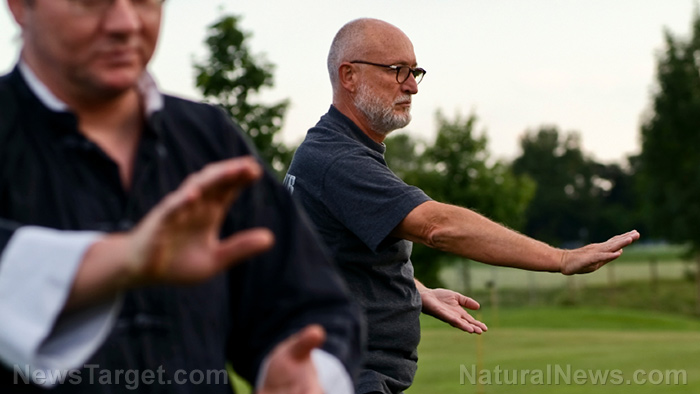
The Chinese martial art has been easily adapted into a wellness exercise. Its low-to-moderate levels of physical exertion make it a good option for sustainable exercise, especially for older people. It is considered to be very appropriate for controlling sarcopenia.
Sarcopenia is defined by lighter skeletal muscles, more fat in normal muscles, weaker muscles, and a diminished level of physical function. People with the syndrome find it difficult to move around the house and are more likely to fall and get fractured bones. They also have a higher chance of developing osteoporosis and serious physical disabilities.
The older a person gets, the more likely he or she will develop sarcopenia. Conversely, the syndrome can be prevented through sustainable exercise.
The longer the strength boost lasts, the better the exercise. However, the exercise form also cannot be too intense, lest it strain the person and cause injury. So the low-impact forms of tai chi make it perfect for sarcopenia management. (Related: Tai Chi found to significantly improve knee movement and flexibility in osteoarthritis patients.)
Comparing the muscle strength of tai chi practitioners with non-practitioners
Researchers from the People's Liberation Army General Hospital (PLAGH) had three goals for their study. First, they wanted to find out the effect of tai chi on specific muscles that contributed to the flexing, extending, and dorsiflex motions of important joints.
Second, they wished to determine the effects of the exercise on people from different age groups. Finally, they planned to figure out any links between the duration of tai chi exercise and the muscle strength of the practitioner.
They gathered 410 local teachers to take part in their study. The participants came from four different communities and their ages ranged from 60 to 89 years old.
Half of the teachers regularly practiced tai chi. They have been performing the exercise anywhere from three to 30 years. The other participants did not partake of tai chi, although they did walk for an average of two hours.
Both the tai chi and non-tai chi practitioners were divided into three age groups: 60-69 years, 70-79 years, and 80-89 years. They were all evaluated for the maximum isometric strength of hamstring, iliopsoas, quadriceps femoris, and tibialis anterior muscles on both sides of their body.
The results were compared to find out the difference of muscle strength between tai chi practitioners and non-practitioners. The researchers also quantified the relationship between the length of time in months that a participant has been practicing yoga and the muscle strength of that person's lower limbs.
The longer you practice tai chi, the stronger your muscles stay
The PLAGH researchers found that tai chi improved the performance of the four muscles responsible for joint flexion, extension, and dorsiflex motions. The hamstring, iliopsoas, quadriceps femoris, and tibialis anterior muscles of the practitioners outperformed their counterparts in the non-tai chi group.
Furthermore, tai chi practitioners from all three age groups did not display any difference in muscle strength. And the longer the participant followed tai chi, the stronger their muscles proved to be during evaluation.
Based on their findings, the study reaffirmed that tai chi can stop the loss of muscle strength caused by aging. In addition, taking up the wellness exercise allowed practitioners to maintain their muscle strength over much longer periods of time.
Pick up more tips and tricks about exercise at MensFitnessFocus.com.
Sources include:
Please contact us for more information.























